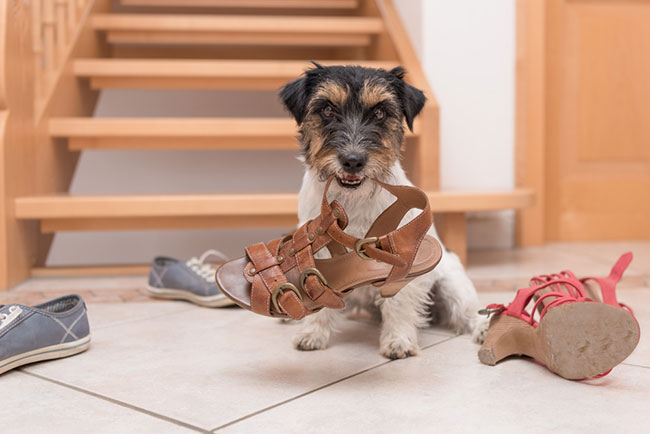
Is your furry friend turning your shoes, furniture, and personal belongings into chew toys? If so, you’re not alone. Chewing is a natural behavior for dogs, but it can become problematic when they start destroying everything in sight. Understanding why your dog chews and taking proactive steps can help preserve your possessions and ensure your dog’s happiness. Here’s a comprehensive guide to prevent your dog from chewing everything.
Understanding the Chewing Instinct
Dogs chew for various reasons, including teething, boredom, anxiety, and curiosity. Puppies explore the world with their mouths, and chewing helps them relieve the discomfort of teething. Adult dogs might chew to alleviate boredom or stress. Identifying the root cause of your dog’s chewing can help tailor the most effective prevention strategies.
Provide Appropriate Chew Toys
One of the simplest ways to prevent destructive chewing is to offer your dog plenty of appropriate chew toys. Look for toys that are durable, safe, and suitable for your dog’s size and chewing strength. Rotate the toys regularly to keep your dog engaged. Chew toys not only satisfy your dog’s need to chew but also promote dental health.
Exercise and Mental Stimulation
A tired dog is a well-behaved dog. Regular exercise is crucial in preventing boredom-induced chewing. Ensure your dog gets enough physical activity through daily walks, playtime, and interactive games like fetch or tug-of-war. Mental stimulation is equally important. Engage your dog with puzzle toys, training sessions, and activities that challenge their mind.
Create a Safe Space
Designate a safe area for your dog where they can be confined when unsupervised. This could be a crate, a playpen, or a specific room in your home. Make sure this space is dog-proofed, removing any items your dog might be tempted to chew. Provide comfortable bedding and a selection of chew toys to keep them occupied.
Use Deterrents
Commercial deterrent sprays can help discourage your dog from chewing on forbidden items. These sprays are typically bitter-tasting and safe for pets. Apply the deterrent to furniture, shoes, and other objects your dog targets. Always follow the instructions on the product label, and reapply as necessary.
Positive Reinforcement Training
Positive reinforcement training is an effective method to modify your dog’s behavior. When you catch your dog chewing on an inappropriate item, calmly redirect them to a suitable chew toy. Praise and reward them when they chew on the correct items. Consistency is key; over time, your dog will learn which objects are off-limits.
Address Anxiety and Stress
If your dog’s chewing is driven by anxiety or stress, it’s important to address the underlying issues. Separation anxiety is a common cause of destructive chewing. Gradual desensitization to being alone, providing comfort items, and using calming aids like pheromone diffusers can help. In severe cases, consulting a professional dog trainer or veterinarian may be necessary.
Puppy-Proof Your Home
Puppies are especially prone to chewing everything in sight. Puppy-proofing your home can prevent accidents and protect your belongings. Keep shoes, remote controls, and other tempting objects out of reach. Use baby gates to block off areas where you don’t want your puppy to roam unsupervised.
Conclusion
Chewing is a natural behavior for dogs, but it doesn’t have to lead to the destruction of your home. By providing appropriate chew toys, ensuring regular exercise and mental stimulation, creating a safe space, using deterrents, employing positive reinforcement training, addressing anxiety, and puppy-proofing your home, you can prevent your dog from chewing everything. Patience and consistency are essential. With the right approach, you can protect your belongings and keep your furry friend happy and healthy.
Remember, every dog is unique, and finding the right combination of strategies might take some trial and error. Stay positive and committed to helping your dog develop good chewing habits, and you’ll both enjoy a more harmonious living environment.




